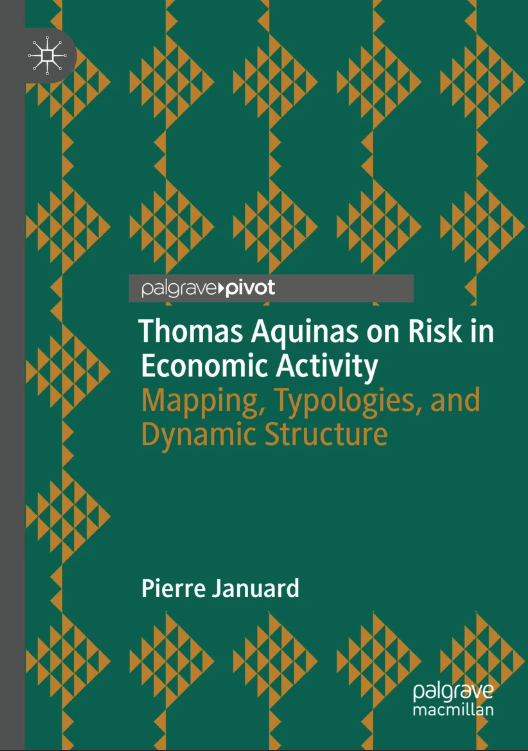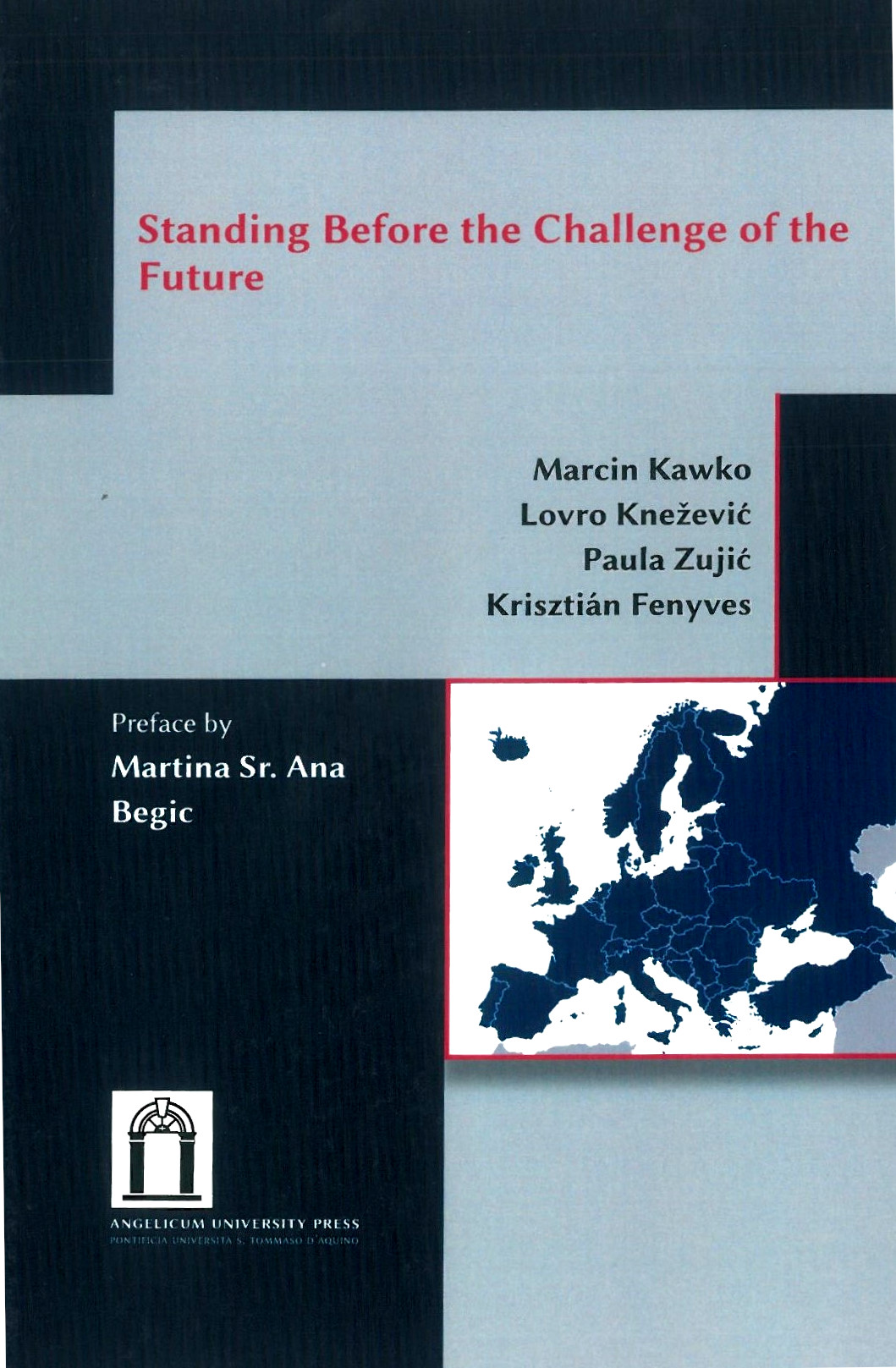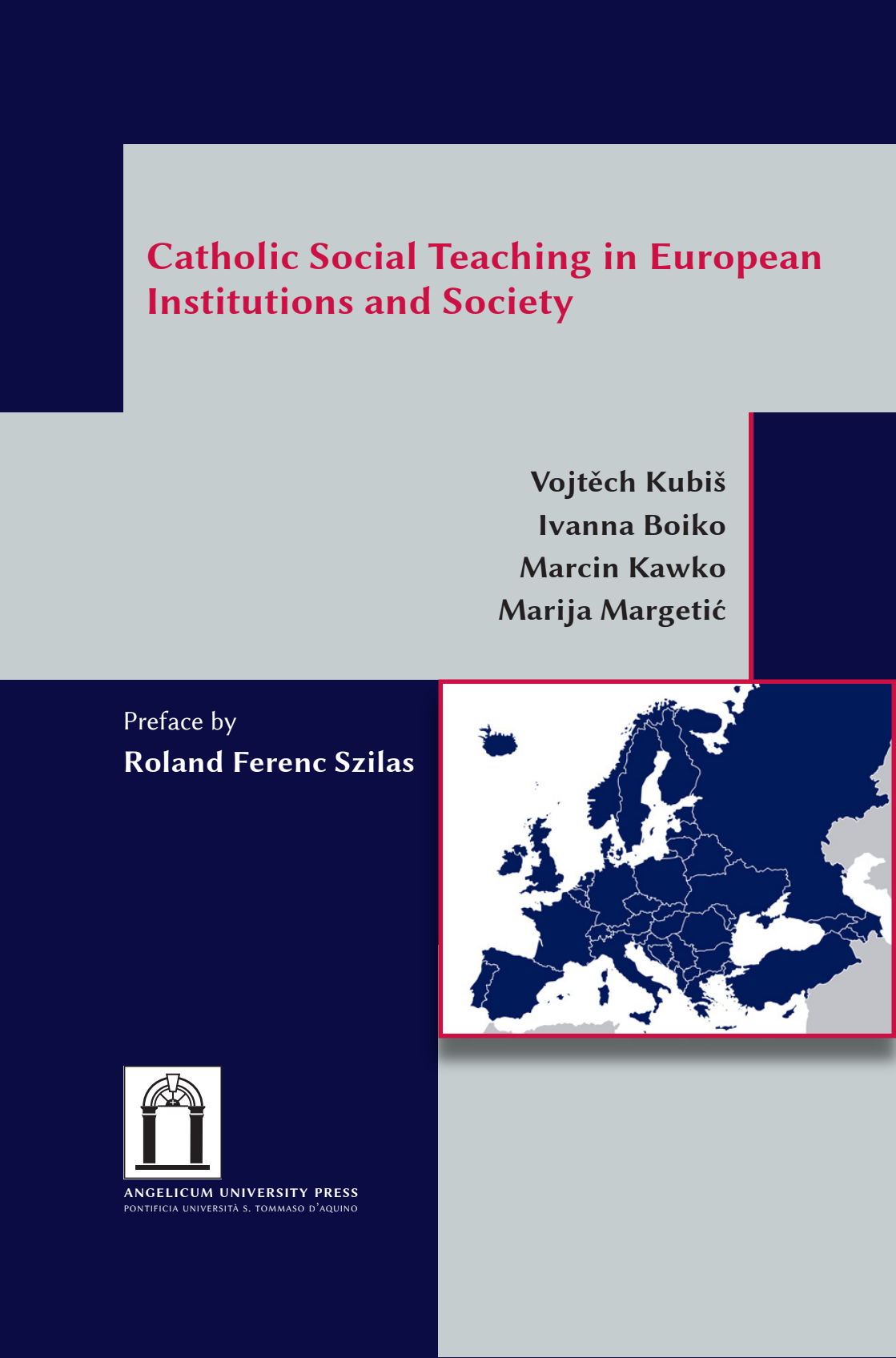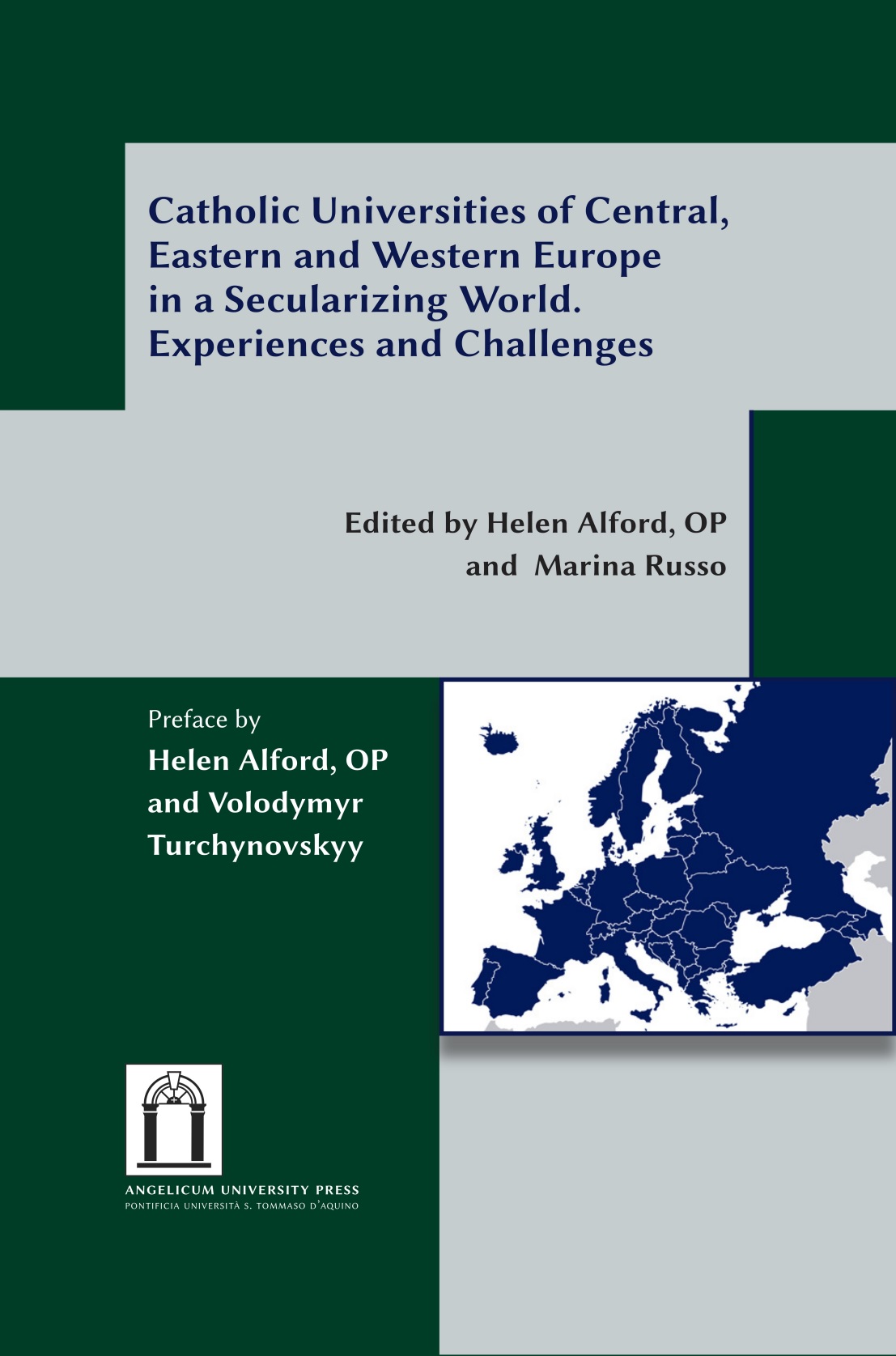 Nowadays in western society the forms and expressions of religiosity are more diverse than ever before. On the one hand, religion is promoted in the public space; on the other, it happens that previously strong ties between religious institutions and individuals become weakened. As a result, multilayered religious identities are built up, and non-institutional religious communities are formed. Changes in religiosity open up space for discussion about social capital, which is one of the key aspects of the functioning of religious communities and their ability to enter the public space. This paper is focused on non-institutional religious communities in the perspective of social capital, which determines their character and ability for active participation in the public realm.
Nowadays in western society the forms and expressions of religiosity are more diverse than ever before. On the one hand, religion is promoted in the public space; on the other, it happens that previously strong ties between religious institutions and individuals become weakened. As a result, multilayered religious identities are built up, and non-institutional religious communities are formed. Changes in religiosity open up space for discussion about social capital, which is one of the key aspects of the functioning of religious communities and their ability to enter the public space. This paper is focused on non-institutional religious communities in the perspective of social capital, which determines their character and ability for active participation in the public realm.
Introduction
The forms and manifestations of religious communities in Western society are currently more diverse than ever before. The transformations in religion and religious forms are aptly illustrated by the phrase “believing without belonging”1, i.e. “faith without belonging”, which can be seen as a manifestation of individualising religiosity. Hans G. Kippenberg2 mentions Sweden as an example of such tendencies, where just 6% of Christians go to church once a month, although more than half the population state that they are religiously-minded. He also draws attention to another discrepancy, where, on the one hand, half of the Swedish people consider themselves atheists but, on the other hand, up to 70% of Swedish citizens are members of a church, a situation which in turn can be described as “belonging without believing”.
Grace Davie, a British sociologist of religion, in her study published in 20063 pointed to another significant religious tendency, which is the fact that churches in Europe have become participants within the public domain and civil society. They are increasingly heard in public debates and have the ability to gain support for their activities. However, the supporters of, and participants, in those activities rarely transfer their activities into the lives of their parishes, which Davie refers to as “vicarious religion”. The processes described above secure the promotion of religion in the public domain, but on the other hand the strong links between religious institutions and individuals weaken, the result of which is the construction of multi-layered religious identities and the emergence of religious communities other than the institutional ones4. They are, according to Jan Váně, an “attempt to preserve an ‘official’ form of religion, while making an effort to mediate religious truths, symbols and standards in a manner that takes into account the desires and needs of individuals to shape their own religiosity 'in their own way'5. Such processes of individualization lead to a divergence from the traditional religious communities and to the “erosion of standardized methods of transmission and sharing of religious ideas that worked up until recently6. Hans G. Kippenberg calls this trend, when religious communities do not carry out their activities under the supervision of the official church but rather they act in competition with the participants in the public sphere of civil society, a “new legal form”7 where the deprivatization of religiosity points to the obvious social and civic potential of religion. Religious Studies expert Tatiana Podolinská states that non-institutional privatization, individualisation and de-traditionalization of religion is typical for post-communist countries in which the “the traditional church faces new religious trends that are a distinctive phenomenon of late-modernity: new forms of membership, new forms of participation, new forms of faith, new forms of belonging and loyalty, new forms of commitment and a decline in engagement”8. These processes of radical change, relevant to the transformation of religiosity (including the consequences for the functioning of religious institutions), open up space for debate about social capital, which according to Robert Putnam is one of the key aspects of the functioning of religious communities and their ability to enter into the public domain9. The aim of this paper10 is to analyze the functions of social capital in non-institutionalized religious communities, which are, thanks to their new kind of status in public life, fundamentally different from traditional forms of religiosity11.
A conceptual definition of the non-institutionalized religious community
The idea of “community” in the social sciences is quite significant, though due to the different perspectives12 on the study of the concept of 'community', it is considered quite ambiguous. Community (i.e. Gemeinschaft) was characterized by Ferdinand Tönnies as a social formation in which its members are linked by a bond of reciprocity-they know what to expect from each other and can trust each other without imposing on each other performance requirements- distinguishing it from “society” (i.e. Gesellschaft). Community can be described essentially as an assemblage of people whose relationships are based on solidarity and a sense of security. It is a place where one can obtain emotional support, appreciation and practical help in everyday life13. Jan Váně, when defining a non-institutionalized religious community, prefers the definition of community by René König, who sees it as a “smaller/minor social unit united by common goals, norms and strategies of purpose realization. Its daily activities and scope are geographically defined, while the ontological status of the community is ‘determined by the awareness of being unique’, which is dependent on the degree of ‘protest’ against certain mechanisms generated by modern society”14. This definition is thoroughly supported by the findings of several authors (P. L. Berger, S. Bruce, T. Luckmann, D. Martin, B. Wilson et al.) who see the concept of modernization, and its key thesis of secularization in relation to religion, as untenable. Furthermore, while the secularization theory predicted the end of religion, its creators themselves have gradually relinquished their assumptions. Today, the manifestations of religiosity in post-modern society are being discussed in connection with detraditionalization15 rather than secularisation. In the context of this phenomenon we also acknowledge discourse about non-institutionalised religious communities (Catholic, Protestant or others), which are a free independent community of believers, not under ecclesiastical jurisdiction and generally have no interest in being a purely civic organisation. A typical characteristic of non-institutionalised religious communities can also be the fact that they mostly consist of individuals who have undergone a religious conversion and who reflect the feeling of a lack of preparedness and response of the church to their need for community16.
A conceptual definition of social capital
Among many others17, it was primarily Bourdieu (1980, 1986), James Coleman (1982, 1988, 1990), and Robert D. Putnam (1993, 1995, 2000) who attempted a theoretical and empirical analysis of social capital. The theory of social capital has gained the particular attention of the sociological literature and, although there are different perspectives on it, researchers agree that social capital is the basis of social bonds and relationships, generating cooperation between individuals, as well as trust and reciprocity18. Even though the phenomenon of social capital is still not fully developed, it embraces many conceptual approaches and typological definitions. One of the most frequently discussed is the classification into bonding social capital, bridging social capital and linking social capital or the formation of social capital on micro, meso and macro levels19. Within Putnam's theory bonding social capital is illustrated as close contacts between people, characterized by strong bonds, seen for example among family members or members of the same (ethnic or religious) community. This type of social capital is a sort of “superglue” which maintains homogeneity, reinforces solidarity, creates specific reciprocity and internal group loyalty and mobilizes mutual cooperation. Bridging social capital includes more distant contacts with weak ties, the building of bridges between different people and groups, such as between business partners, friends from different ethnic groups or ecumenical religious organizations. It brings people together despite differences and contributes to the cohesion of the whole society20. Linking social capital refers to contacts between individuals who hold a certain position of power. It differs from the previous two as it speaks volumes about relationships between people who are not of the same social positions, or about relationships between community members and those who are outside of it. It connects people with key political, religious or economic authorities and institutions. This type of social capital was introduced by M. Woolcock (1998, 2001)21. The micro level concerns an individual or small group of individuals (e.g. family) belonging to a certain social context. Engagement in social (ethnic, religious) groups and organizations with diverse membership is important for social capital at the meso level. The macro level of social capital is connected to the formation of coherence on a nation-wide level, and facilitates the effective functioning of government, economic growth, lower crime rates, active citizenship and such like22.
Social capital in non-institutionalized religious communities
The social capital research on religious (mostly Protestant) communities is the focus of Putnam’s book American Grace, in which he reached some surprising conclusions. The first one was that the decline of religious identity in the United States was not directly related to the rise of atheism, but rather to the weakening of ties to religious institutions. It became apparent that the Americans refused “organized religion” and an “official outline” of their faith. Putnam also found that those individuals who claimed that religion was of great importance to their lives, possessed a higher degree of social capital compared to atheists and that religious communities “owned” most of the social capital in the country. Finally, it turned out that members of these religious communities were also truly active citizens. They were interested in politics, more of them voted and they participated more in diverse events within the public domain than others23. However, and this was interesting, it was not those believers who regularly attended church who were more active, but those who were members of a religious community24 with strong social ties and an extensive stock of social capital25. Putnam's research confirmed that unofficial forms of religion in the form of non-institutionalized religious communities had higher social capital, which made them predisposed for a more active participation in the public domain, distinguishing them from the official religious institutions. Social capital of non-institutionalized religious communities is shared among their members at the meso level. The meso community level strengthens community life and can provide the sense of belonging to something / somewhere26, which is a feature typical for non-institutionalized religious communities. The meso community level creates conditions for the establishment of mutual cooperation and a strengthening of trust. The homogeneity of non-institutionalized religious groups helps create a stable bond of interpersonal and social character27 and of a generalized reciprocity28 based on the motto “I will help you and you will help them” (positive social capital)29. There are situations where the homogeneity of the group, strengthened by the bonds within, may also come with certain limitations. This happens when members of the community have the same or similar resources, which can lead to the isolation of individual groups or which can limit the ability of individuals to act (negative social capital)30. In both these contexts bonding as well as bridging social capital can be identified.
Bonding social capital mobilizes positive social attitudes, and encourages civic and political participation and an interest in public affairs31. For example, the members of the non-institutionalized religious community Gofer, studied by Jan Váně, were involved in working with youth, endeavouring to awaken their interest in volunteering32. In turn, bridging social capital plays a relevant role in creating intra-group solidarity, in crossing the boundaries between social (religious, ethnic and other) groups and in overcoming intolerance between groups33. The religious community Gofer can be used again as an example, where Váně found that its members moved relatively easily34 between forms of identity and membership of different (social, occupational and hobby) groups35. It should be emphasised that the formation of bridging social capital requires constant efforts to exceed one’s own identity (i.e. social, political, religious), and not to be afraid of forming relationships with those who are “not like us”. A human being is, after all, characterized by a need for belonging and for relationships, which also supplies the sense of who one is and where one belongs. Finally, in the context of non-institutionalized religious communities we can also talk about linking social capital, which refers to contacts with individuals occupying certain positions of power. Since linking social capital is rather vertical in nature, which means that it connects ordinary people with social (i.e. religious, political) authorities and institutions, a weakening, even absence, can be observed in the relationship between the non-institutionalized religious communities and official religious representatives.
I believe that the transformation of religiosity towards the “informal forms” is a phenomenon to be faced especially by the “traditional churches” in post-communist countries, which also have to deal with the question of why they have failed to reach out to and attract “defected” believers who more or less shun the traditional Church, and who carry out their activities - religious and civil - independently, without any official Church consent. In addition, religious authorities usually show a reserved, or even negative, attitude to non-institutionalized forms of religiosity, resulting in a deepening of mutual mistrust. The sociology of religion in the postmodern age finds this situation all the more difficult, as it aims to examine the transformation of religious identities and religiosity that are more and more non-institutionalized while managing to remain religious36. Moreover, the spiritual identity of “non-church”, less-traditional (de-traditionalized), “alternative” and non-institutionalized communities37 is represented by “living religiosity” and a sense of belonging, an emphasis on the quality of interpersonal relationships and abundant reserves of social capital, making them an opposition to the “formal”, sporadic forms of religiosity without active participation.
Conclusion
This paper pays attention to the transformations in religion, namely, to non-institutionalized religious communities, which are typified by private spiritual experience and divergence from traditional religious institutions. At the same time,  when compared to traditional church communities, non-institutionalized religious communities are typically rich in reserves of social capital that qualify them for active participation in the public domain.
when compared to traditional church communities, non-institutionalized religious communities are typically rich in reserves of social capital that qualify them for active participation in the public domain.
Present-day post-modern society is increasingly atomized and de-socialized. We can observe an increasing loss of social capital, a fading of reciprocity and social cohesion. Non-institutionalized religious communities provide the chance for fulfilling the desire for community, giving the opportunity to share one’s personal experience of faith with others. Personally experienced religiosity, thanks to its “legal form”, has the ability to enter into the public domain, “bring the believers into the streets” and aid in forming a civic society. This shows the social power of religion, whose “strengths and weaknesses” manifested within society cannot therefore be assessed on the basis of the official involvement of churches in public life. Non-institutionalized forms of religious experience play a considerable role in this area. Their dynamism and vitality, with an emphasis on the quality of interpersonal relationships, are the starting points for not only religious but also social productivity.
Bibliography
AMIT, V. – RAPPORT, N.: The Trouble with Community: Anthropological Reflections on Movement, Identity and Collectivity. London: Pluto Press, 2002.
BAUMAN, Z.: Community: Seeking Safety in an Insecure World. Cambridge: Polity Press, 2001.
BLOCKLAND, T.: Ethnic Complexity: Routes to Discriminatory Repertoires in an Inner-city Neighbourhood. In: Ethnic and Racial Studies. roč. 26, č. 1, 2003, s. 1–24.
COLEMAN, J. S.: Social Capital in the Creation of Human-Capital. In: American Journal of Sociology, Vol 94, 1988, s. 95–120.
DAVIE, G.: Vicarious Religion: A methodological Challenge. In: AMMERMANN, N. (ed.): Everyday Religion: Observing Modern Religious Lives. New York : Oxfor University Press, s. 21-37.
ENDRESS, M.: Structures of Belonging. Types of Social Capital and Modest of Trust. In: THOMÄ, D.-HENNIG, CH.-SCHMID, H. B. (eds.): Social Capital, Social Identities. Boston: de Gruyter, 2014, s. 55-73.
ETZIONI, A.: The Spirit of Community: Rights, Responsibilities, and the Communitarian Agenda. New York: Crown, 1993.
FIELD, J.: Social Capital. London. New York: Routledge, 2003.
FOLEY, M. - HOGE, D. R.: Religion and the New Immigrants: How Faith Communities Form Our Newest Citizens. Oxford: Oxford University Press, 2007.
FUKUYAMA, F.: Fiducia. Milano: Rizzoli, 1994.
FUKUYAMA, Francis: Veľký rozvrat. Ľudská prirodzenosť a opätovné nastolenie spoločenského poriadku. Bratislava: AGORA, 2005.
HAGAN, M. J.: Social networks, gender and immigrant incorporation: resources and constraints. In: American Sociological Review, Vol. 63, No. 1, 1998, s. 55-67.
HANIFAN, L. J.: The Rural School Community Center. In: Annals of the American Academy of Political and Social Science, č. 67, 1916, s. 130.
HARTL, P.: Komunita občanská a komunita terapeutická. Praha: Sociologické nakladatelství (Slon), 1997.
IANNONE, R.: Il capitale sociale. Origine, significati e funzioni. Milano: FrancoAngeli, 2006.
KIPPENBERG, H. G.: The Social Capital of Religious Communities in the Age of Globalization. In: THOMÄ, D.-HENNIG, CH.-SCHMID, H. B. (eds.): Social Capital, Social Identities. Boston: de Gruyter, 2014, s. 135-150.
LIN, N.: Social Capital. A Theory of Social Structure and Action. New York: Cambridge University Press, 2001.
PODOLINSKÁ, T.: Religiozita v dobe neskorej modernity: Prípad Slovensko. In: Sociální studia. Fakulta sociálních studií Masarykovy univerzity, č. 3-4, 2008, s. 51-84.
PUTNAM, R.: Making Democracy Work. Civic traditions in modern Italy. New York: Princeton University Press, 1993.
PUTNAM, R.: Bowling alone. New York: Simon & Schuster, 2000.
PUTNAM, R. - CAMPBELL, D. E.: American Grace: How Religion Divides and Unites Us. New York: Simon & Schuster, 2010.
SEDLÁČKOVÁ, M.: Důvěra a demokracie. Praha: SLON, 2012.
ŠAFR, J. – SEDLÁČKOVÁ, M.: Sociální kapitál. Koncepty, teorie a metody měření. Praha: Sociologický ústav Akademie věd České republiky, 2006.
VÁNĚ, J.: Jaké postoje zaujímají neinstitucionalizované náboženské komunity k procesu individualizace? [online], [cit. 19/06/2015]. Available at:
https://otik.uk.zcu.cz/
WEGNER, E.: Communities of Practice: Learning, Meaning, and Identity. New York: Cambridge University Press, 1998.
NOTES
1. DAVIE, G.: Religion in Britain since 1945: Believing without Belonging. Oxford: Blackwell, 1994.
2. KIPPENBERG, H. G.: The Social Capital of Religious Communities in the Age of Globalization. In: THOMÄ, D.-HENNIG, CH.-SCHMID, H. B. (eds.): Social Capital, Social Identities. Boston: de Gruyter, 2014, pp. 135-150.
3. DAVIE, G.: Vicarious Religion: A methodological Challenge. In: AMMERMANN, N. (ed.): Everyday Religion: Observing Modern Religious Lives. New York : Oxford University Press.
4. VÁNĚ, J.: Jaké postoje zaujímají neinstitucionalizované náboženské komunity k procesu individualizace? [online], [cit. 19/06/2015]. Available at: https://otik.uk.zcu.cz/
5. ibid, [cit. 19/06/2015]. Available at: https://otik.uk.zcu.cz/
6. ibid, [cit. 19/06/2015]. Available at: https://otik.uk.zcu.cz/
7. KIPPENBERG, H. G.: The Social Capital of Religious Communities in the Age of Globalization. In: THOMÄ, D.-HENNIG, CH.-SCHMID, H. B. (eds.): Social Capital, Social Identities. Boston: de Gruyter, 2014, p. 136.
8. Ibid pp. 51-84.
9. PUTNAM, R. - CAMPBELL, D. E.: American Grace: How Religion Divides and Unites Us. New York: Simon & Schuster, 2010.
10. The inspiration to write this paper was Jan Váně’s article (VÁNĚ, J.: Jaké postoje zaujímají neinstitucionalizované náboženské komunity k procesu individualizace? [online], [cit. 19/06/2015]. Available at: https://otik.uk.zcu.cz/
Vane.pdf?sequence=1) It analyzes the Czech non-institutionalized community Gofer (the author changed the name of the community in his post) and its efforts to cope with the process of privatization and detraditionalization of religiosity.
11. KIPPENBERG, H. G.: The Social Capital of Religious Communities in the Age of Globalization. In: THOMÄ, D.-HENNIG, CH.-SCHMID, H. B. (eds.): Social Capital, Social Identities. Boston: de Gruyter, 2014, p. 136.
12. Compare for example ‘community’ within the scope of anthropological discourse (Amit and Rapport 2002); in the discussion ‘community and practice’ (Wegner 1998); community from the point of view of social capital (Putnam 2000); community as a post-modern virtue of social grouping (Bauman 2001), community from the point of view of the theory of communitarianism (Etzioni 1993) or community in empirical studies about aspects of community (Blockland 2003).
13. HARTL, P.: Komunita občanská a komunita terapeutická. Praha: Sociologické nakladatelství (Slon), 1997, p. 35.
14. VÁNĚ, J.: Jaké postoje zaujímají neinstitucionalizované náboženské komunity k procesu individualizace? [online], [cit. 19/06/2015]. Available at: https://otik.uk.zcu.cz/
15. PODOLINSKÁ, T.: Religiozita v dobe neskorej modernity: Prípad Slovensko. In: Sociální studia. Fakulta sociálních studií Maasarykovy univerzity. 3-4/2008, pp. 51-84.
16. VÁNĚ, J.: Jaké postoje zaujímají neinstitucionalizované náboženské komunity k procesu individualizace? [online], [cit. 19/06/2015]. Available at: https://otik.uk.zcu.cz/
17. For example Lin 1981, Hardin 1999, Fukuyama 2000, Field 2003, Halpern 2005, Iannone 2006.
18. PUTNAM, R.: Making Democracy Work. Civic Traditions in Modern Italy. New York: Princeton University Press, 1993, p. 167.
19. HALPERN, D.: Social Capital. Cambridge: Polity Press, 2005, 388 pp.
20. SEDLÁČKOVÁ, M.: Důvěra a demokracie. Praha: SLON, 2012, p. 84.
21. ŠAFR, J. – SEDLÁČKOVÁ, M.: Sociální kapitál. Koncepty, teorie a metody měření. Praha: Sociologický ústav Akademie věd České republiky, 2006, p. 28.
22. FIELD, J.: Social Capital. London. New York: Routledge, 2003, p. 1.
23. PUTNAM, R.: Bowling alone. New York: Simon & Schuster, 2000, 544 pp.
24. In the US, it is Protestant churches in particular which are characterized by a high degree of social capital and active social and political participation. Therefore, the question of why Protestant churches are more active in civil activity than the Catholic Church arises. The reason may lie in different horizontal and vertical relationships, both within religious institutions and also between the religious authorities and their faithful. The traditional hierarchical structure of the Catholic Church supports more vertical relations (between bishops and priests and between priests and believers) marked by passivity and subordination, where there is little room for the emergence of social capital. In contrast, Protestant churches are rather supportive of horizontal relationships, resulting in a higher stock of social capital.
25. PUTNAM, R. - CAMPBELL, D. E.: American Grace: How Religion Divides and Unites Us. New York: Simon & Schuster, 2010, p. 444.
26. ENDRESS, M.: Structures of Belonging. Types of Social Capital and Models of Trust. In: THOMÄ, D.-HENNIG, CH.-SCHMID, H. B. (eds.): Social Capital, Social Identities. Boston : de Gruyter, 2014, pp. 55-73.
27. VÁNĚ, J.: Jaké postoje zaujímají neinstitucionalizované náboženské komunity k procesu individualizace? [online], [cit. 19/06/2015]. Available at: https://otik.uk.zcu.cz/
28. The opposite of generalized reciprocity is specific reciprocity based on the concept: “I will help you, you will help me”.
29. PUTNAM, R.: Bowling alone. New York: Simon & Schuster, 2000, 544 pp.
30. ibid, pp. 350-363.
31. ibid, p. 22.
32. VÁNĚ, J.: Jaké postoje zaujímají neinstitucionalizované náboženské komunity k procesu individualizace? [online], [cit. 19/06/2015]. Available at: https://otik.uk.zcu.cz/
33. PUTNAM, R.: Bowling alone. New York: Simon & Schuster, 2000, p. 22.
34. However, some authors, i.e. Foley and Hoge, state that for some protestant Pentecostal religious communities, creating a broad bridging social capital is deemed undesirable, since they strive to "reach salvation" in small and closed groups. See: FOLEY, M.-HOGE, D. R.: Religion and the New Immigrants: How Faith Communities Form Our Newest Citizens. Oxford: Oxford University Press, 2007.
35. VÁNĚ, J.: Jaké postoje zaujímají neinstitucionalizované náboženské komunity k procesu individualizace? [online], [cit. 19/06/2015]. Available at: https://otik.uk.zcu.cz/
36. PODOLINSKÁ, T.: Religiozita v dobe neskorej modernity: Prípad Slovensko. In: Sociální studia. Fakulta sociálních studií Masarykovy univerzity. 3-4/2008, pp. 51-84.
37. VÁNĚ, J.: Jaké postoje zaujímají neinstitucionalizované náboženské komunity k procesu individualizace? [online], [cit. 19/06/2015]. Available at: https://otik.uk.zcu.cz/
 IT
IT  EN
EN 
















